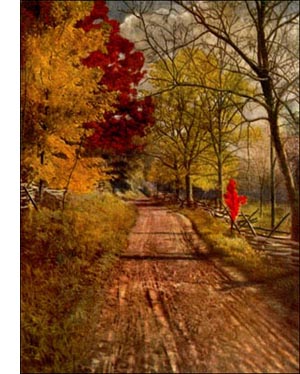Incense Cedar
 Genus LIBOCEDRUS, Endl.
Genus LIBOCEDRUS, Endl.Tall, aromatic, resinous trees. Leaves scale-like, 4-ranked, in flat sprays. Flowers monoecious, solitary, minute, terminal. Fruit an annual cone, oblong, few-scaled.
(L. decurrens) INCENSE CEDAR
This single representative of its genus in America has seven sister species, chiefly in the Southern Hemisphere. Formosa and
southwestern China, New Zealand, New Guinea, and South America from Chili to Patagonia-these have their incense cedars, dis
tinguished by the flat, frond-like spray of bright green scale leaves. Our species is grown in parks in the neighbourhood of Philadelphia and New York, and in protected situations about Boston. In Europe it is often planted for ornament.
It is native to the slopes of the Cascade and other coast ranges and the Sierra Nevada. It extends from Oregon into Lower California, and reaches its best estate and greatest numbers in the central part of California, between 5,000 and 7,000 feet above the sea. Its lumber resembles that of arbor vitae, and is used for furniture, fencing, lath and shingles, for interior woodwork, and for flume building.
John Muir's description of it is most illuminating:
"The incense cedar, when full grown, is a magnificent tree, 120 to nearly 200 feet high, 5 to 8 and occasionally 12 feet in diameter, with cinnamon-coloured bark and warm, yellow-green foliage, and in general appearance like an arbor vitae. It is distributed through the main forest from an elevation of 3,000 to 6,000 feet, and in sheltered portions of canons on the warm sides to 7,500 feet. In midwinter, when most trees are asleep, it puts forth its flowers. The pistillate are pale green and inconspicuous, but the staminate are yellow, about one-fourth of an inch long, and are in myriads, tingeing all the branches with gold, and making the tree as it stands in the snow look like a gigantic goldenrod. Though scattered rather sparsely amongst its companions in the open woods, it is seldom out of sight, and its bright brown shaft and warm masses of plumy foliage make a striking feature of the landscape. While young and growing fast in an open situation, no other tree of its size in the park forms so exactly tapered a pyramid. The branches, outspread in flat plumes and beautifully fronded, sweep gracefully downward and outward, except those near the top, which aspire; the lowest droop to the ground, overlapping one another, shedding rain and snow, and making fine tents for storm-bound mountaineers and birds. In old age it becomes irregular and picturesque, mostly from accidents-running fires, heavy wet snow breaking the branches, lightning shattering the top, compelling it to try to make new summits out of side branches, etc. Still it frequently lives more than a thousand years, invincibly beautiful, and worthy its place beside the Douglas spruce and the great pines."